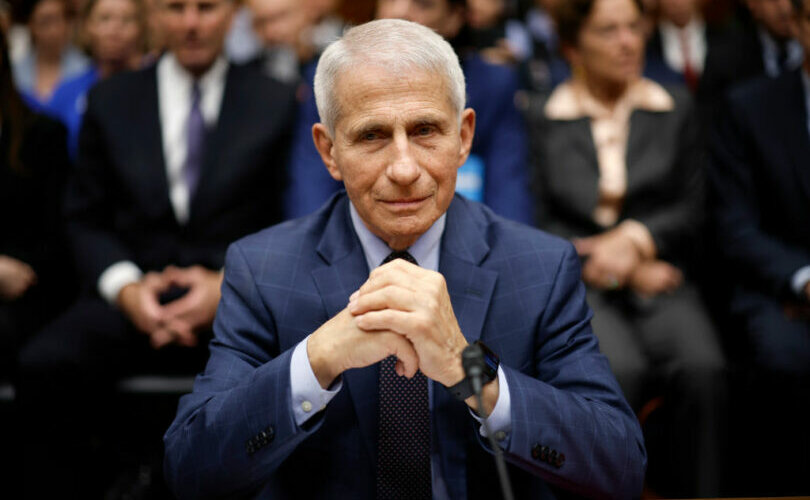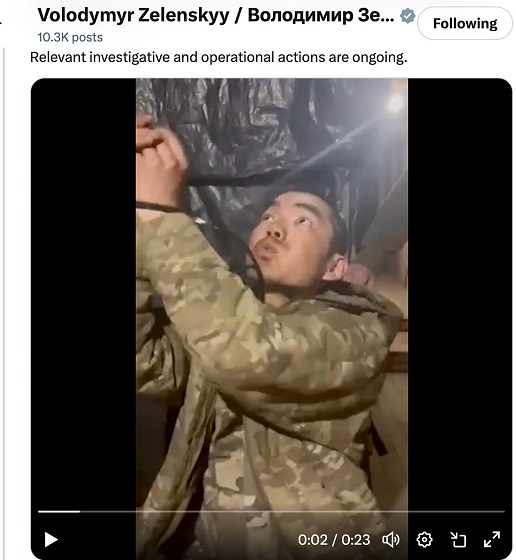Alberta
Education Minister Adriana LaGrange announces nearly 25,000 new and upgraded spaces for students
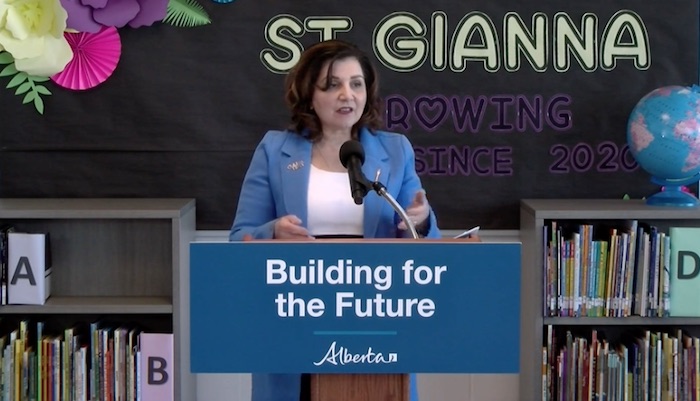
Investing in new schools, modernized spaces
Alberta’s government is investing $2.3 billion over the next three years, for new and modernized classrooms.
Budget 2023 supports 58 projects, which includes 13 full construction projects, 20 design, 14 planning and 11 pre-planning projects. In total, there will be nearly 25,000 new and additional spaces for students across Alberta – 9,400 new spaces and more than 15,500 student upgraded spaces. This includes approximately 4,500 new and upgraded spaces in Calgary, 4,100 in Edmonton and 16,300 for the rest of the province.
“Alberta’s young learners are the community and business leaders of tomorrow. They need the right spaces to gain the tools and skills needed to prepare for their bright futures. By investing in our schools, we’re investing in our students while at the same time creating more jobs and supporting the local economy.”
This investment in education infrastructure includes:
- $372 million for construction and design projects:
- 10 new schools
- 16 replacement schools
- seven modernizations
- $4 million to support planning activities such as site analysis and scope development for 14 projects
- $1 million to pre-plan 11 conceptual projects that are anticipated to become high-priority needs for school jurisdictions
- $1 billion to continue work on previously announced projects
- $300 million over three years in school authority self-directed capital projects
- $279 million to support the maintenance and renewal of existing school buildings through the Capital Maintenance and Renewal Program
- $171 million to support public charter school infrastructure, including investment for a charter hub in Calgary
- $43 million to fund facility upgrades for successful collegiate school applicants
- $93 million for the modular classroom program to address urgent space needs across the province
“The Alberta government is investing in critical infrastructure projects that include upgrading and building high-quality schools to ensure Albertans can send their children to schools in their local communities. Our focus is on ensuring these projects are delivered on time, on budget and where they’re needed.”
The availability of suitable sites has been one of the biggest roadblocks causing delays to school projects. That’s why, through Budget 2023, Alberta’s government is creating a new School Planning Program that will serve as a transparent “pipeline” for upcoming school projects to begin as soon as formal construction funding is approved. Fourteen school projects will begin planning and site development through this new program while a further 11 projects will receive pre-planning funding to assist with developing scope options.
The planning program will allow for the further development of project scope and site investigation work. It will also help to clarify potential risks and identify mitigating strategies and costs. The goal is to provide school boards with the resources they need to remove barriers and better position the project for design consideration and construction approval in future budget cycles, which is expected to reduce costs and minimize schedule disruptions and delays.
“The Calgary Catholic Board of Trustees is grateful for the capital projects announced for the Calgary Catholic School District, which includes full funding for the K-9 school in Nolan Hill to serve this rapidly growing community. We anticipate receiving the full construction funding for the Rangeview high school and Chestermere K-9 school as soon as possible, after the design process is completed. These projects need urgent attention given the critical need for school infrastructure and CCSD’s high utilization rate in these communities. CCSD appreciates the pre-planning commitment towards the construction of the K-9 school in Redstone, the addition/enhancement of Bishop McNally High School and the construction of a new west-end high school.”
“On behalf of CBE students and their families, we thank the Government of Alberta for the capital plan announcement. These extraordinary and timely investments in infrastructure are vital to support student learning opportunities within our system.”
“This is an exciting day for Elk Island Public Schools, for the community and especially for students of both École Campbelltown and Sherwood Heights Junior High. A modern, well-equipped and efficient building will allow us to continue to offer the quality education students need to succeed in the classroom and will help ease the growth pressures we are facing in Sherwood Park.”
Quick facts:
- Full construction funding activities include construction and post-occupancy review.
- Design funding activities include the preparation of construction tender documents such as drawings and specifications.
- Planning funding activities include site analysis and scope development activities.
- Pre-planning funding allows a conceptual project to define scope elements, programming priorities and includes activities such as community engagement.
- To support the decision-making process for delivering infrastructure projects, the Ministry of Infrastructure passed the Infrastructure Accountability Act in December 2021. This act outlines how the province prioritizes projects for the annual capital plan.
- As legislated by the act, the government also published Building Forward: Alberta’s 20-Year Strategic Capital Plan in December 2021, providing a blueprint for long-term infrastructure investment and development in Alberta.
- The government’s budget decisions are made in accordance with the act and are guided by the strategic capital plan to ensure future capital investments benefit Albertans.
- Government partners, such as municipalities and school boards, will also be able to plan for capital funding knowing the long-term direction of government.
Budget 2023 school projects – full construction funding (13):
| Community | School division | Project type/Name |
| Airdrie | Conseil scolaire FrancoSud | new secondary school |
| Calgary | Calgary Board of Education | modernization of John G. Diefenbaker High School |
| Calgary | Calgary Roman Catholic Separate School Division | new K-9 school in Nolan Hill |
| Edmonton | Conseil scolaire Centre-Nord | solution for École Michaëlle-Jean and École Gabrielle-Roy |
| Edmonton | Edmonton Public School Board | new K-9 school in Edgemont |
| Lethbridge | Holy Spirit Roman Catholic Separate School Division | new K-6 school in west Lethbridge |
| Lethbridge | Conseil scolaire FrancoSud | École La Vérendrye gym project |
| Okotoks | Christ the Redeemer Catholic Separate School Division | replacement of École Good Shepherd School |
| Penhold | Chinook’s Edge School Division | replacement of Penhold Elementary School |
| Raymond | Westwind School Division | new high school |
| Sherwood Park | Elk Island School Division | solution for Sherwood Park |
| Valleyview | Northern Gateway School Division | solution for Valleyview |
| Waskatenau | Lakeland Roman Catholic Separate School Division | replacement of Holy Family Catholic School |
Budget 2023 school projects – design funding (20):
| Community | School division | Project type/Name |
| Airdrie | Rocky View School Division | new K-8 school in southwest Airdrie |
| Barrhead | Pembina Hills School Division | modernization and rightsizing of Barrhead Composite High School |
| Blackfalds | Red Deer Catholic Separate School Division | new K-5 school |
| Bow Island / Burdett | Prairie Rose School Division | solution for Bow Island and Burdett |
| Breton | Wild Rose School Division | modernization and rightsizing of Breton High School and demolition of Breton Elementary School |
| Brooks | Grasslands School Division | replacement of Brooks Junior High School |
| Chestermere | Calgary Roman Catholic Separate School Division | new K-9 school |
| Calgary | Calgary Roman Catholic Separate School Division | new high school in Rangeview |
| Edmonton | Edmonton Catholic Separate School Division | solution for Rundle Heights |
| Edmonton | Edmonton Public School Board | new junior/senior high school in Glenridding Heights |
| Fort McMurray | Conseil scolaire Centre-Nord | replacement of K-12 École Boréale |
| Lac La Biche | Northern Lights School Division | replacement of Vera M. Welsh School |
| Leduc | Black Gold School Division | modernization of École Corinthia Park School |
| Mallaig | St. Paul School Division | replacement of École Mallaig School |
| Medicine Hat | Medicine Hat Roman Catholic Separate School Division | replacement of St. Francis Xavier School |
| Nanton | Livingstone Range School Division | solution for Nanton |
| Red Earth Creek | Peace River School Division | replacement of Red Earth Creek School |
| Spruce Grove | Parkland School Division | replacement of Spruce Grove Composite High School |
| Taber | Horizon School Division | modernization of the W.R. Myers and D.A. Ferguson schools |
| Wainwright | Buffalo Trail School Division | replacement of Wainwright School |
Budget 2023 – School Planning Program projects (14):
| Community | School division | Project type/Name |
| Airdrie | Rocky View School Division | new grades 9-12 school |
| Calgary | Calgary Board of Education | modernization of Annie Gale School |
| Calgary | Calgary Board of Education | new high school in Cornerstone |
| Coalhurst | Palliser School Division | modernization of Coalhurst High School |
| Donnelly | High Prairie School Division | G. P. Vanier School |
| Edmonton | Edmonton Catholic Separate School Division | new K-9 school in Heritage Valley Cavanagh |
| Edmonton | Edmonton Public School Board | new K-6 school in Rosenthal |
| Edmonton | Edmonton Public School Board | new elementary school in Glenridding Heights |
| Fort McMurray | Fort McMurray School Division | modernization of Westwood Community High School |
| Grande Prairie | Peace Wapiti School Division | new high school north of Grande Prairie |
| Lethbridge | Lethbridge School Division | modernization of Galbraith Elementary School |
| Okotoks | Foothills School Division | new high school |
| Stettler | Clearview School Division | modernization and addition at Stettler Middle School |
| Strathmore | Golden Hills School Division | replacement of Westmount School |
Budget 2023 – Pre-Planning Program projects (11):
| Community | School division | Project type/Name |
| Calgary | Calgary Board of Education | modernization of A.E. Cross School |
| Calgary | Calgary Board of Education | modernization of Sir John A. Macdonald School |
| Calgary | Calgary Board of Education | new Saddle Ridge middle school |
| Calgary | Calgary Roman Catholic Separate School Division | new elementary school in Redstone |
| Calgary | Calgary Roman Catholic Separate School Division | addition at Bishop McNally High School |
| Calgary | Calgary Roman Catholic Separate School Division | new west Calgary high school |
| Chestermere | Rocky View School Division | new K-9 school |
| Cochrane | Rocky View School Division | new K-5/K-8 |
| Edmonton | Edmonton Catholic Separate School Division | new north K-9 school |
| Edmonton | Edmonton Public School Division | new junior high school in Pilot Sound/McConachie |
| Red Deer | Red Deer Public Schools | new northeast middle school |
Alberta
Made in Alberta! Province makes it easier to support local products with Buy Local program

Show your Alberta side. Buy Local. |
When the going gets tough, Albertans stick together. That’s why Alberta’s government is launching a new campaign to benefit hard-working Albertans.
Global uncertainty is threatening the livelihoods of hard-working Alberta farmers, ranchers, processors and their families. The ‘Buy Local’ campaign, recently launched by Alberta’s government, encourages consumers to eat, drink and buy local to show our unified support for the province’s agriculture and food industry.
The government’s ‘Buy Local’ campaign encourages consumers to buy products from Alberta’s hard-working farmers, ranchers and food processors that produce safe, nutritious food for Albertans, Canadians and the world.
“It’s time to let these hard-working Albertans know we have their back. Now, more than ever, we need to shop local and buy made-in-Alberta products. The next time you are grocery shopping or go out for dinner or a drink with your friends or family, support local to demonstrate your Alberta pride. We are pleased tariffs don’t impact the ag industry right now and will keep advocating for our ag industry.”
Alberta’s government supports consumer choice. We are providing tools to help folks easily identify Alberta- and Canadian-made foods and products. Choosing local products keeps Albertans’ hard-earned dollars in our province. Whether it is farm-fresh vegetables, potatoes, honey, craft beer, frozen food or our world-renowned beef, Alberta has an abundance of fresh foods produced right on our doorstep.
Quick facts
- This summer, Albertans can support local at more than 150 farmers’ markets across the province and meet the folks who make, bake and grow our food.
- In March 2023, the Alberta government launched the ‘Made in Alberta’ voluntary food and beverage labelling program to support local agriculture and food sectors.
- Through direct connections with processors, the program has created the momentum to continue expanding consumer awareness about the ‘Made in Alberta’ label to help shoppers quickly identify foods and beverages produced in our province.
- Made in Alberta product catalogue website
Related information
Alberta
Province to expand services provided by Alberta Sheriffs: New policing option for municipalities

Expanding municipal police service options |
Proposed amendments would help ensure Alberta’s evolving public safety needs are met while also giving municipalities more options for local policing.
As first announced with the introduction of the Public Safety Statutes Amendment Act, 2024, Alberta’s government is considering creating a new independent agency police service to assume the police-like duties currently performed by Alberta Sheriffs. If passed, Bill 49 would lay additional groundwork for the new police service.
Proposed amendments to the Police Act recognize the unique challenges faced by different communities and seek to empower local governments to adopt strategies that effectively respond to their specific safety concerns, enhancing overall public safety across the province.
If passed, Bill 49 would specify that the new agency would be a Crown corporation with an independent board of directors to oversee its day-to-day operations. The new agency would be operationally independent from the government, consistent with all police services in Alberta. Unlike the Alberta Sheriffs, officers in the new police service would be directly employed by the police service rather than by the government.
“With this bill, we are taking the necessary steps to address the unique public safety concerns in communities across Alberta. As we work towards creating an independent agency police service, we are providing an essential component of Alberta’s police framework for years to come. Our aim is for the new agency is to ensure that Albertans are safe in their communities and receive the best possible service when they need it most.”
Additional amendments would allow municipalities to select the new agency as their local police service once it becomes fully operational and the necessary standards, capacity and frameworks are in place. Alberta’s government is committed to ensuring the new agency works collaboratively with all police services to meet the province’s evolving public safety needs and improve law enforcement response times, particularly in rural communities. While the RCMP would remain the official provincial police service, municipalities would have a new option for their local policing needs.
Once established, the agency would strengthen Alberta’s existing policing model and complement the province’s current police services, which include the RCMP, Indigenous police services and municipal police. It would help fill gaps and ensure law enforcement resources are deployed efficiently across the province.
Related information
-

 2025 Federal Election1 day ago
2025 Federal Election1 day agoMark Carney To Ban Free Speech if Elected
-

 Freedom Convoy2 days ago
Freedom Convoy2 days agoA Miscarriage of Justice
-
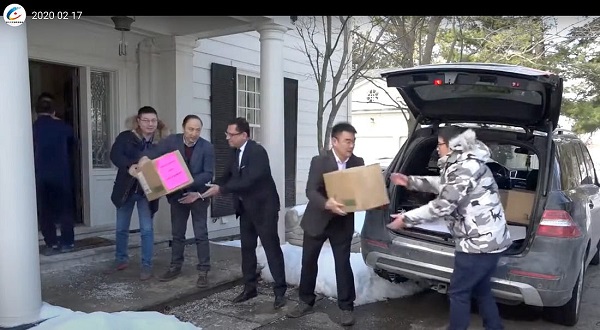
 2025 Federal Election15 hours ago
2025 Federal Election15 hours agoPPE Videos, CCP Letters Reveal Pandemic Coordination with Liberal Riding Boss and Former JCCC Leader—While Carney Denies Significant Meeting In Campaign
-

 Business2 days ago
Business2 days agoClosing information gaps to strengthen Canada’s border security and track fentanyl
-

 espionage2 days ago
espionage2 days agoHong Kong Detains Parents of Activist Frances Hui Amid $1M Bounty, Echoing Election Interference Fears in Canada
-
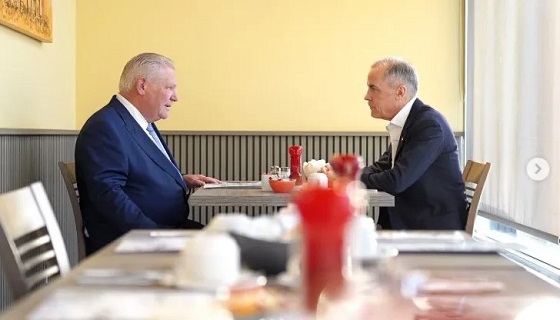
 2025 Federal Election22 hours ago
2025 Federal Election22 hours agoTrudeau and Carney Have Blown $43B on EVs
-

 2025 Federal Election7 hours ago
2025 Federal Election7 hours agoNo Matter The Winner – My Canada Is Gone
-

 Alberta6 hours ago
Alberta6 hours agoProvince to expand services provided by Alberta Sheriffs: New policing option for municipalities




